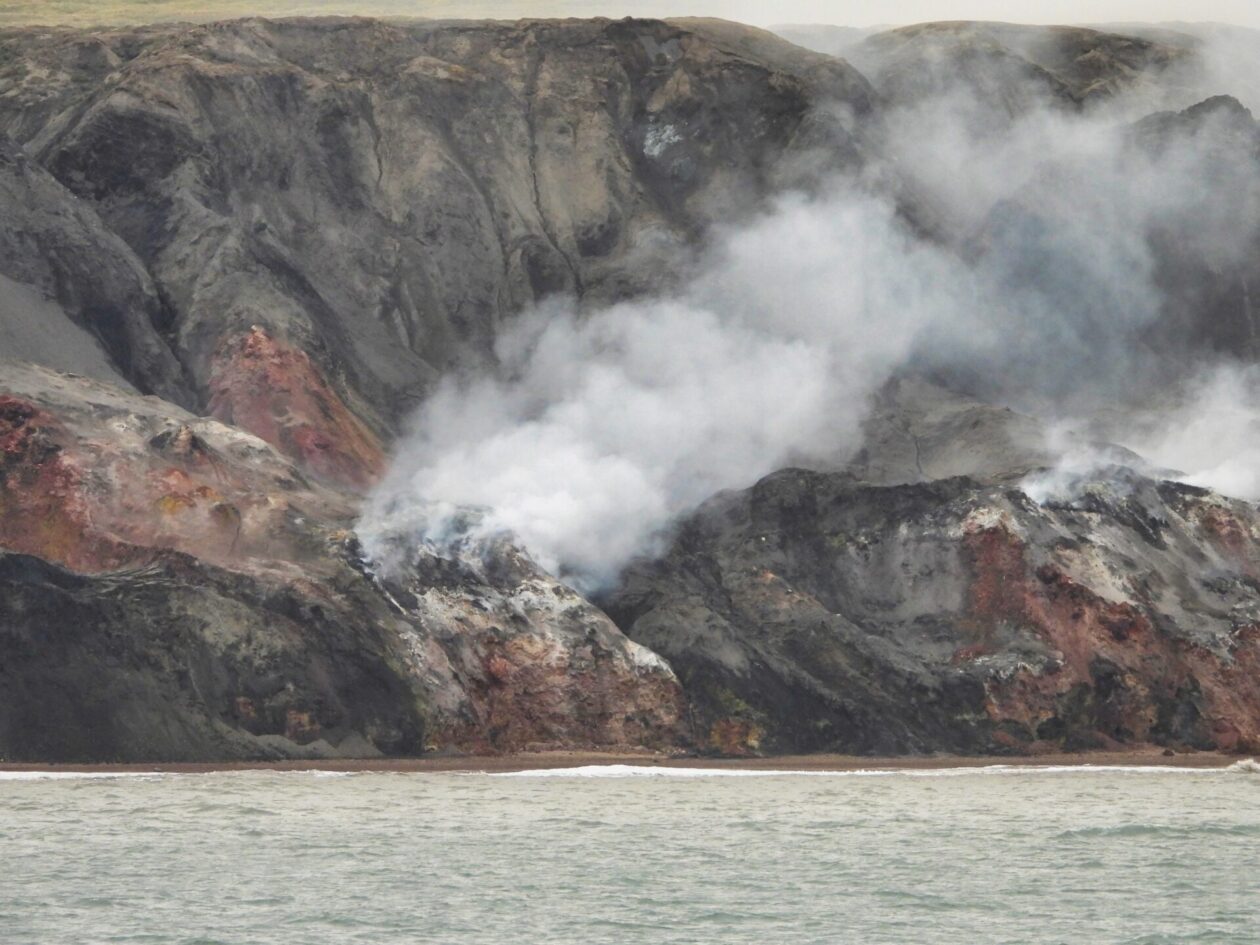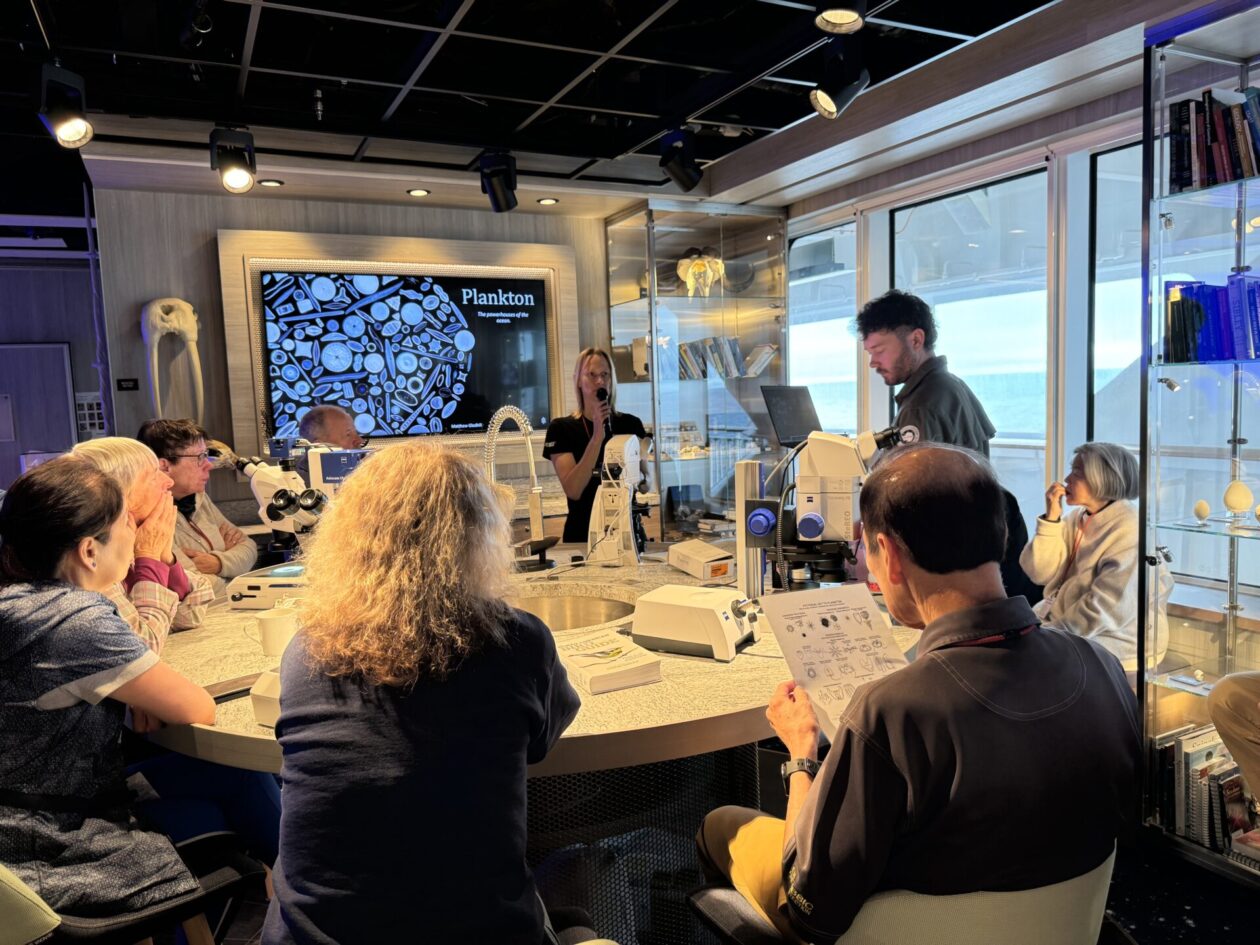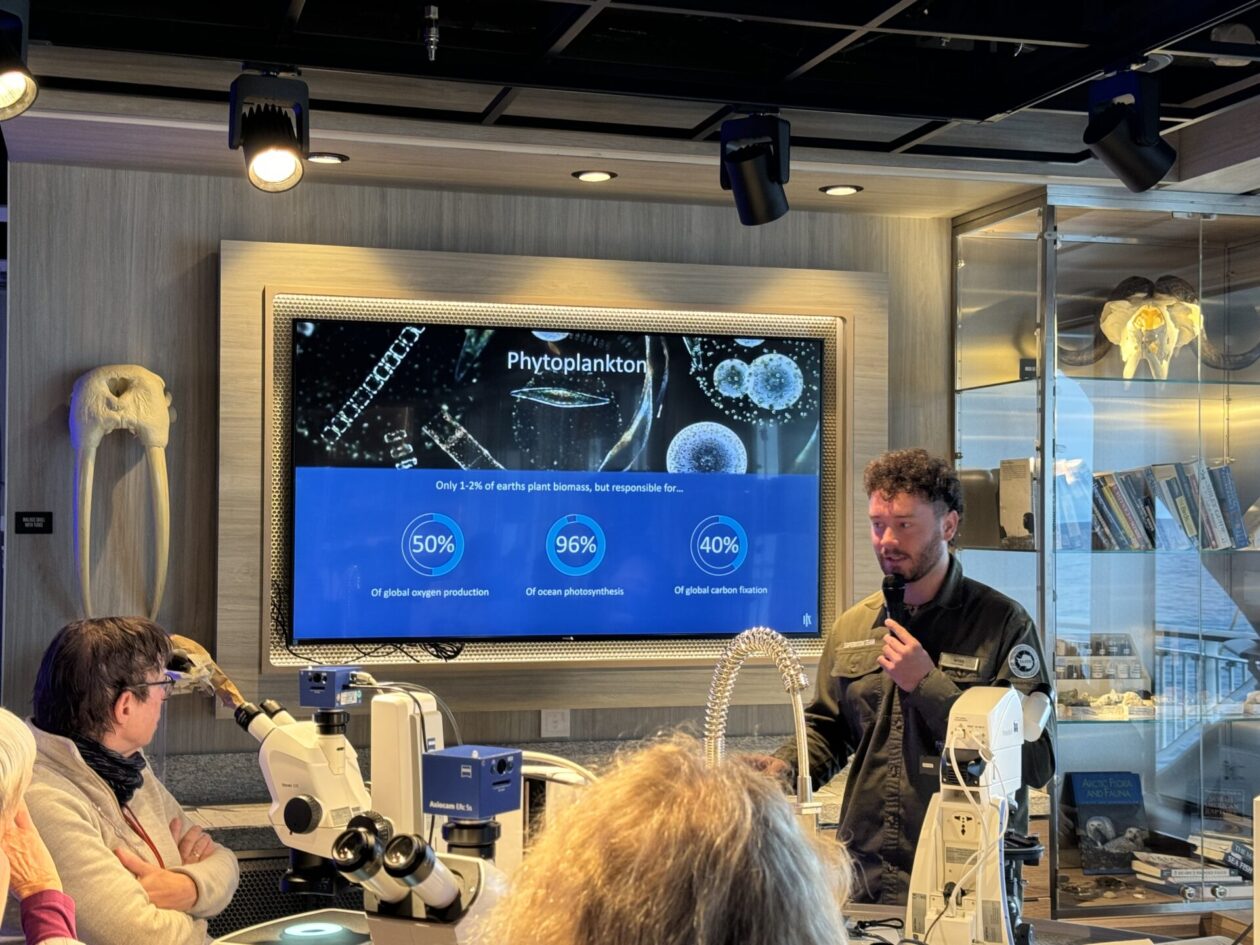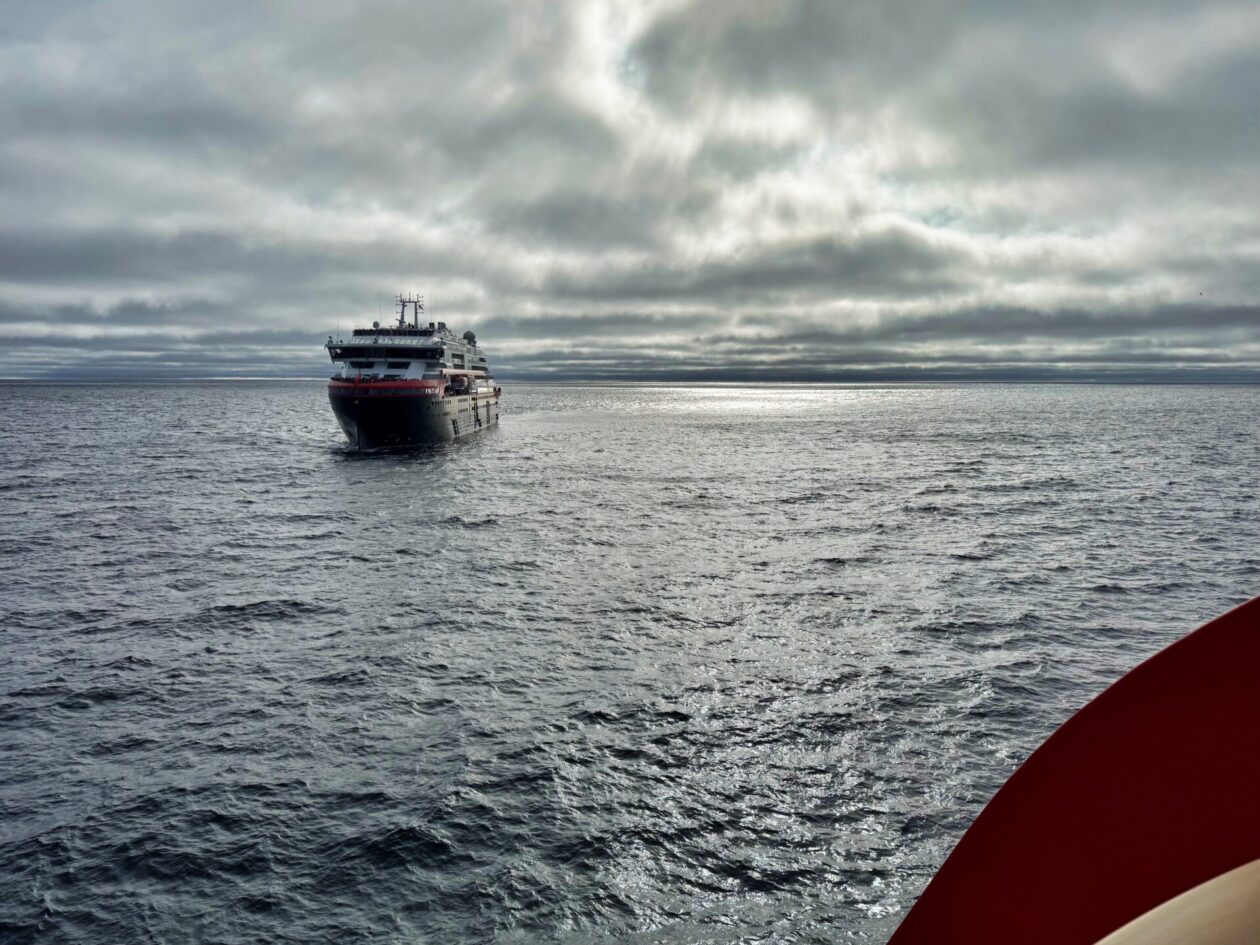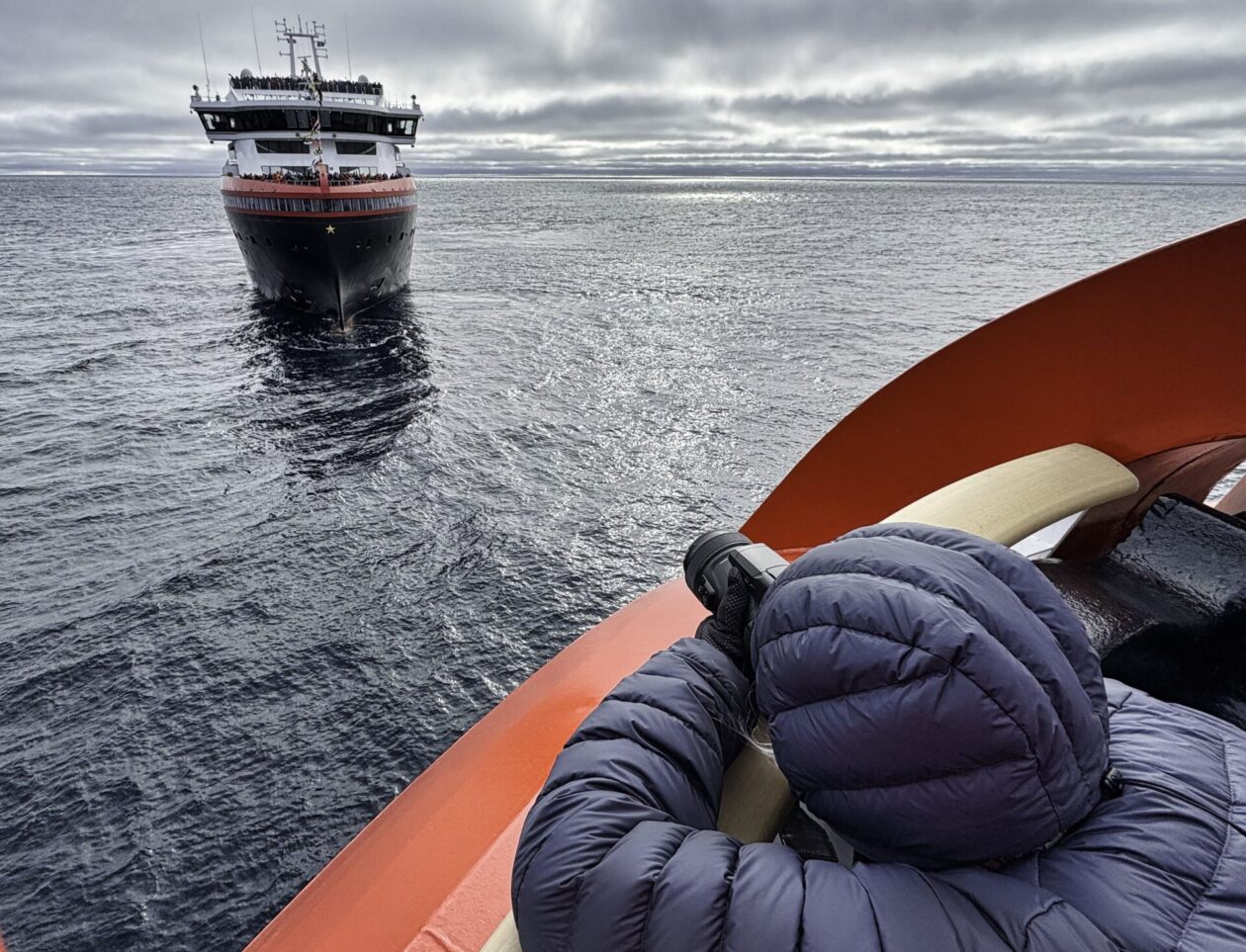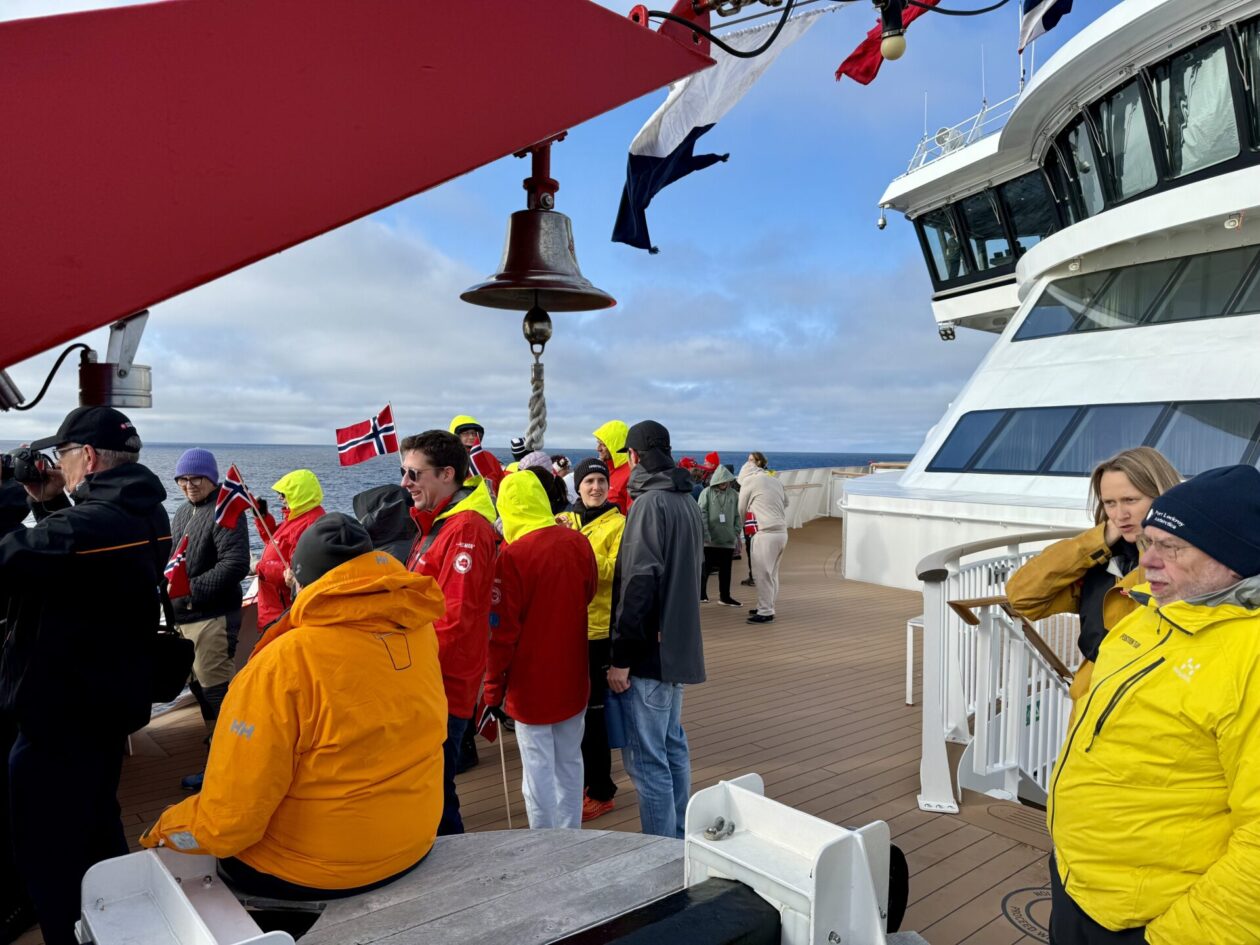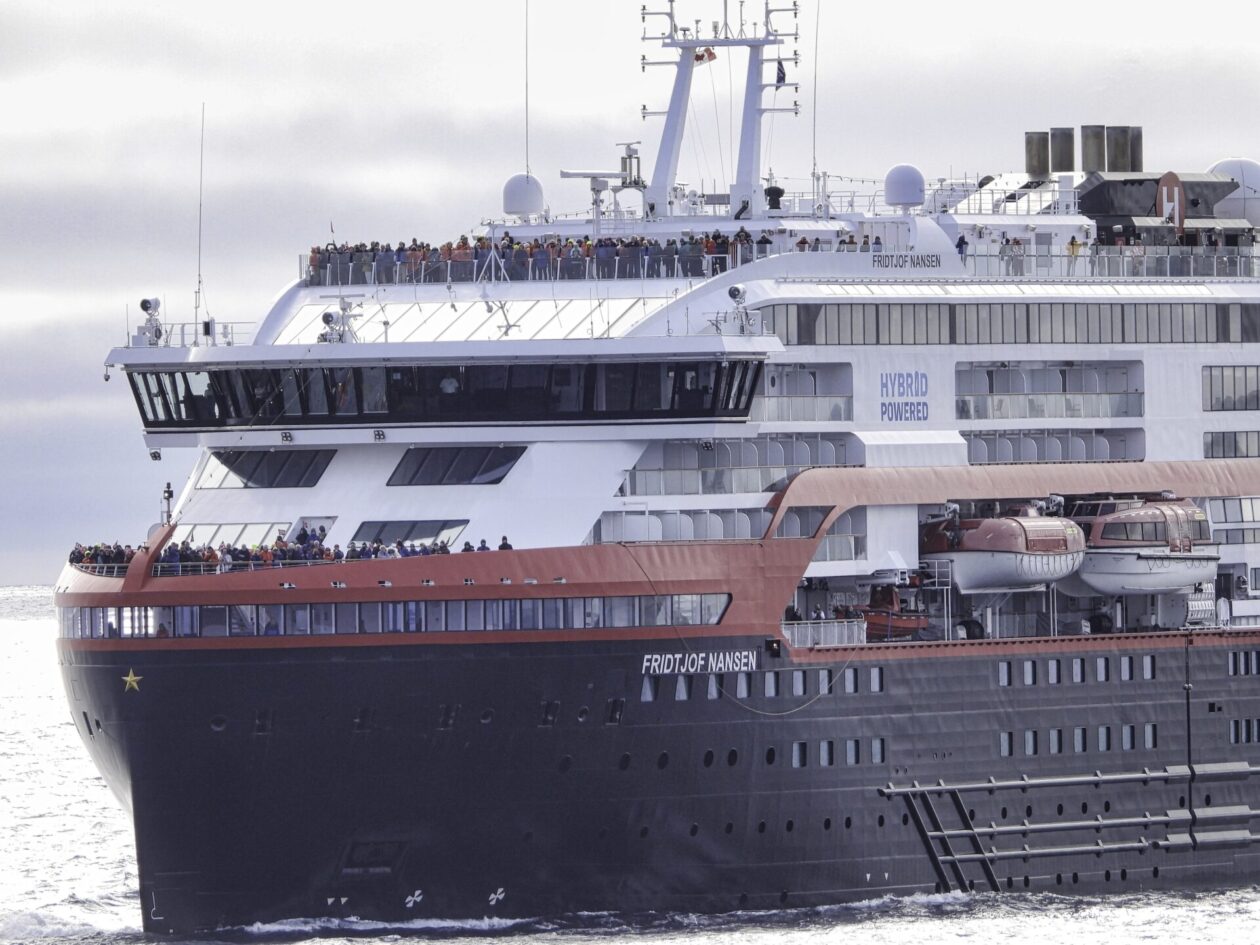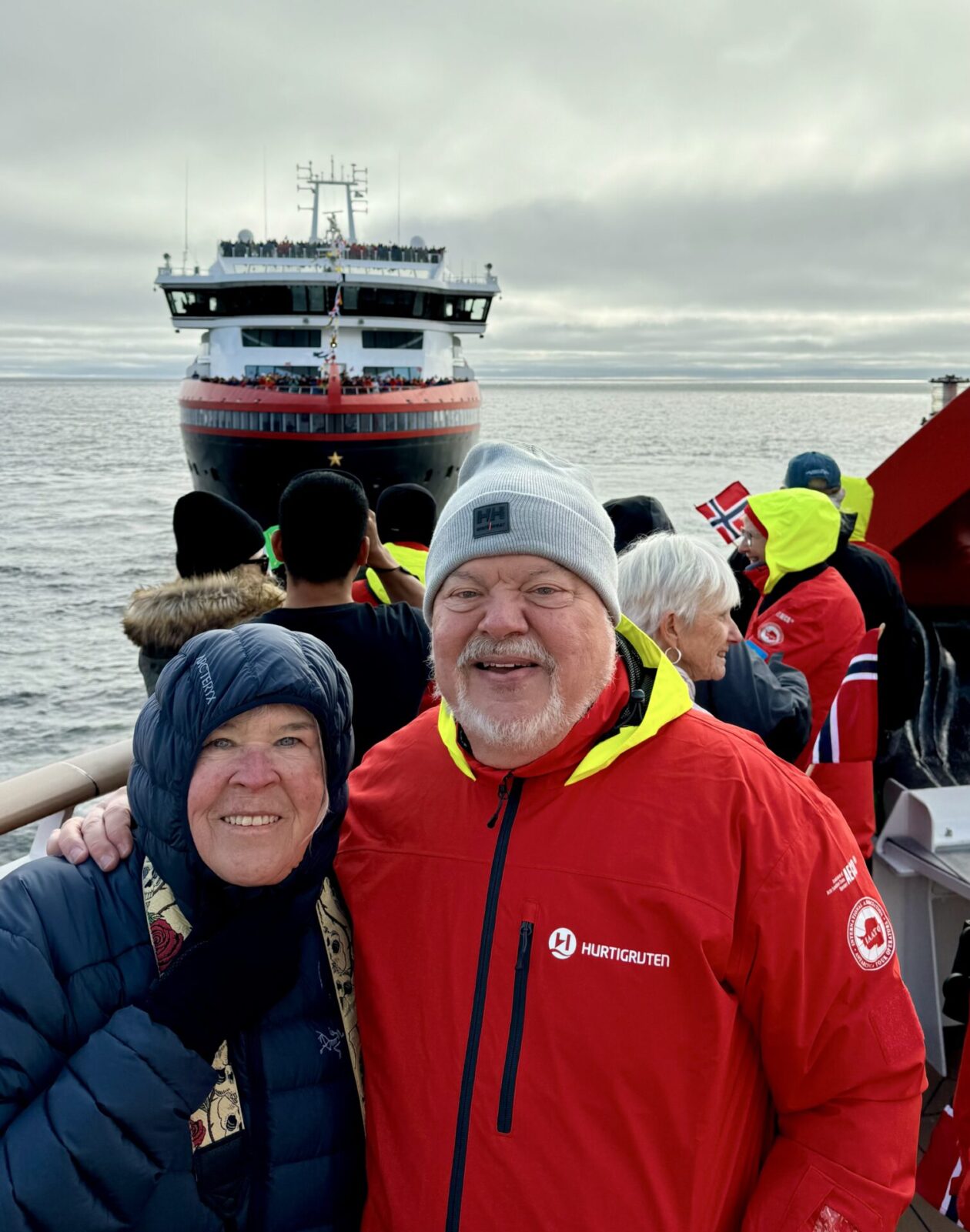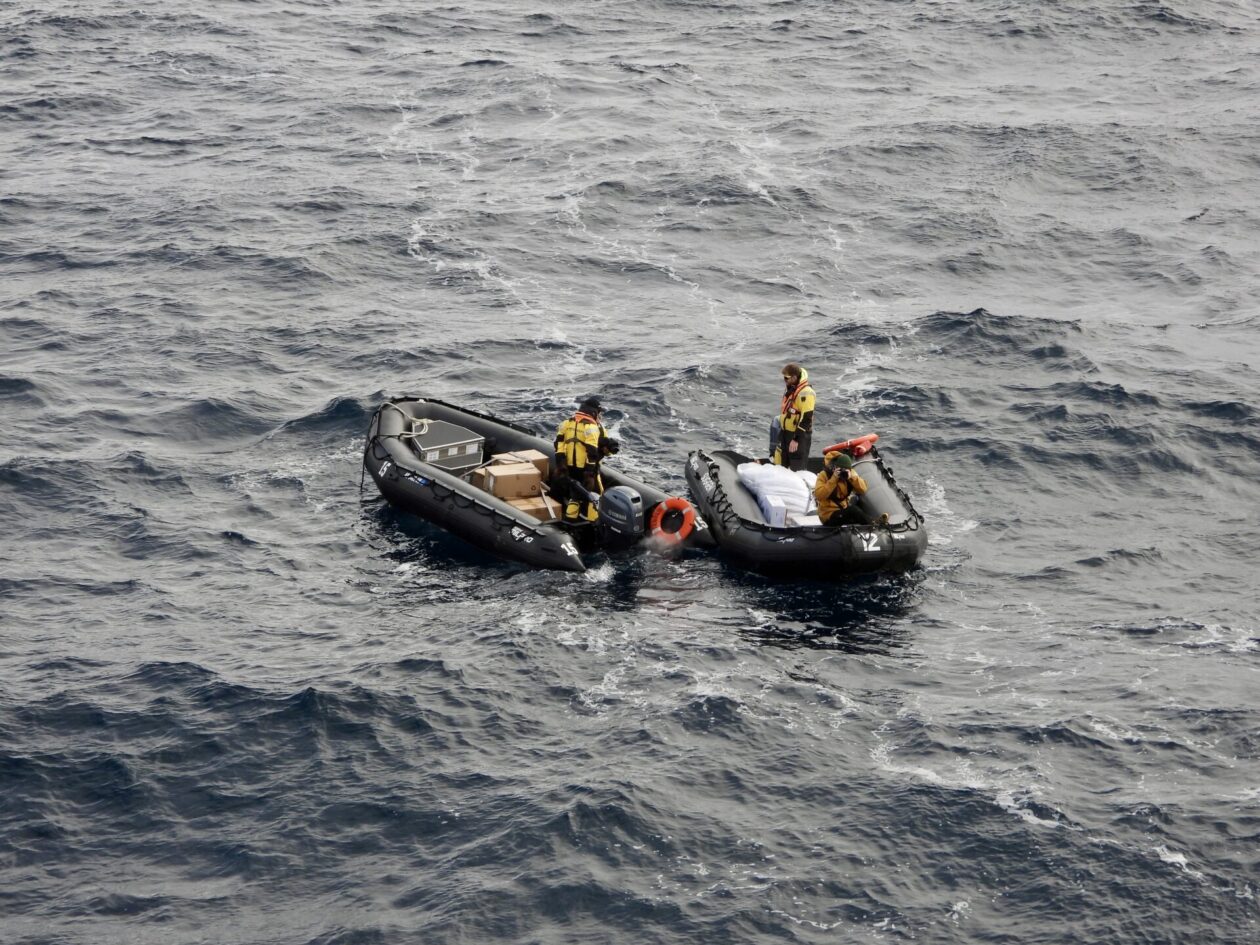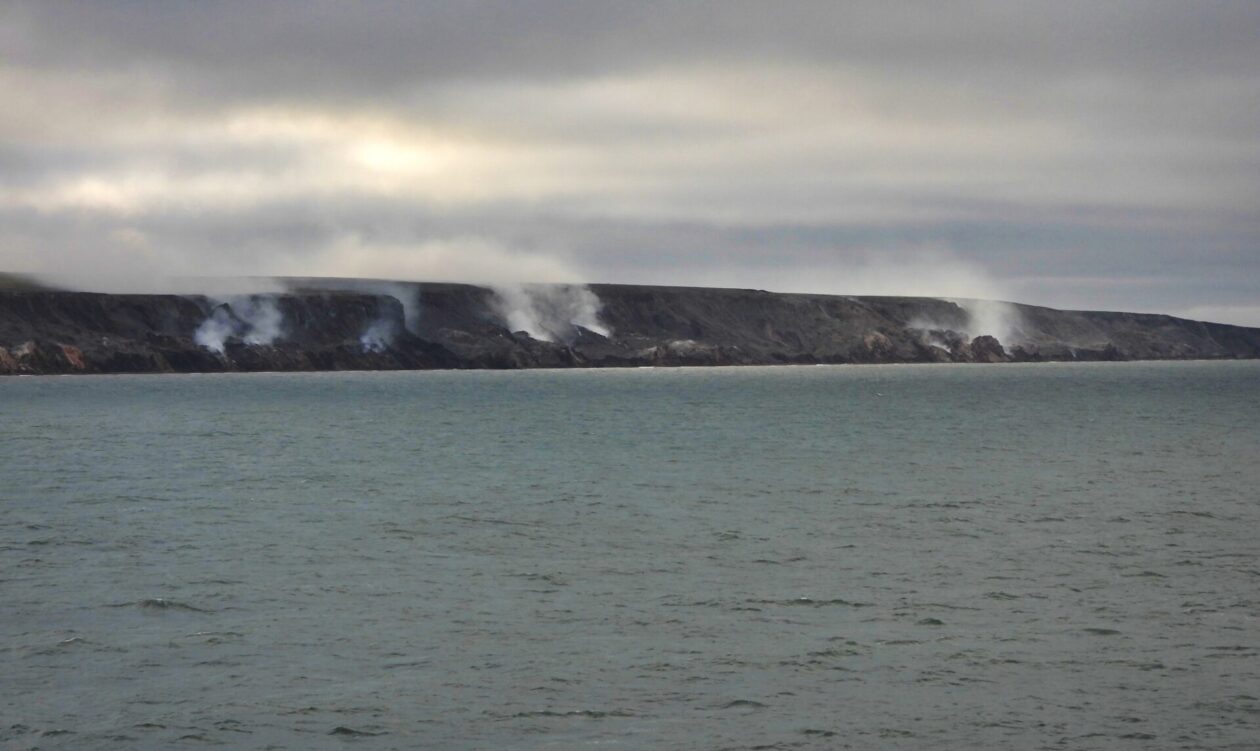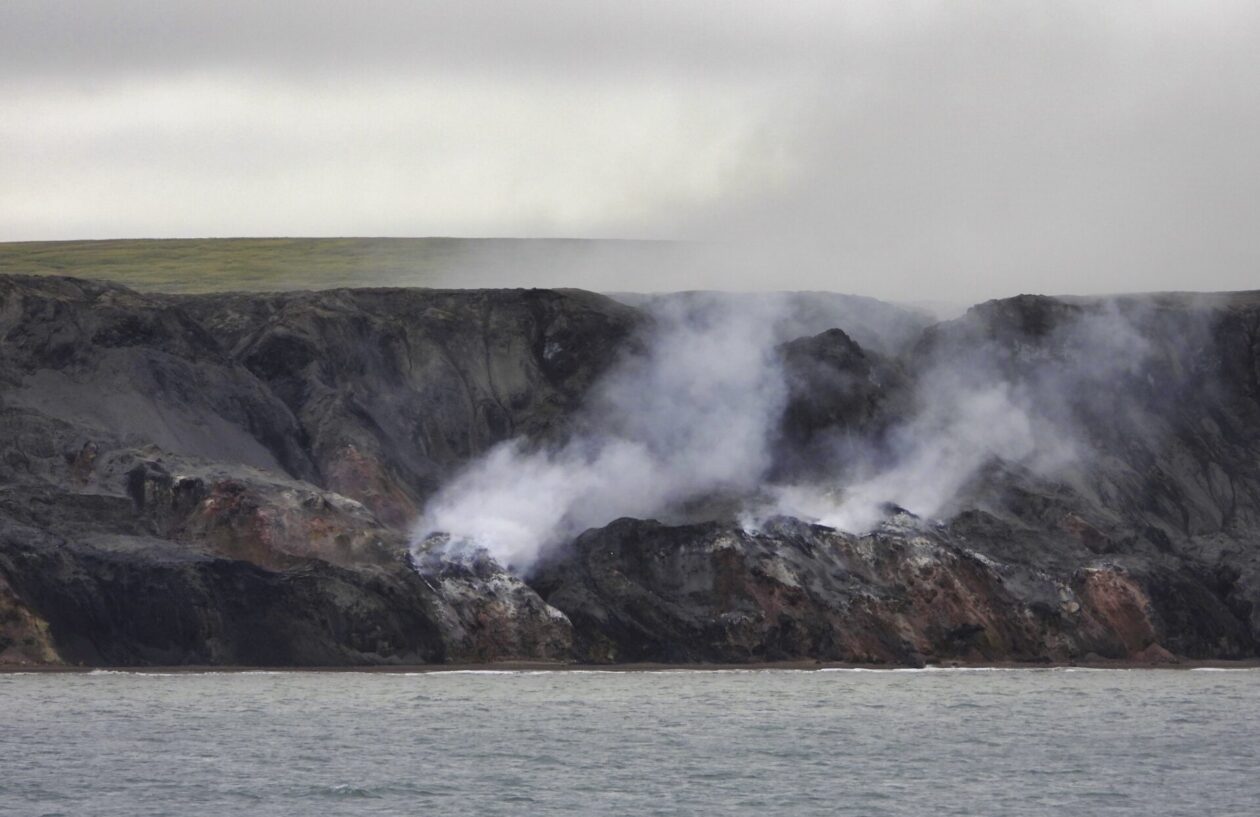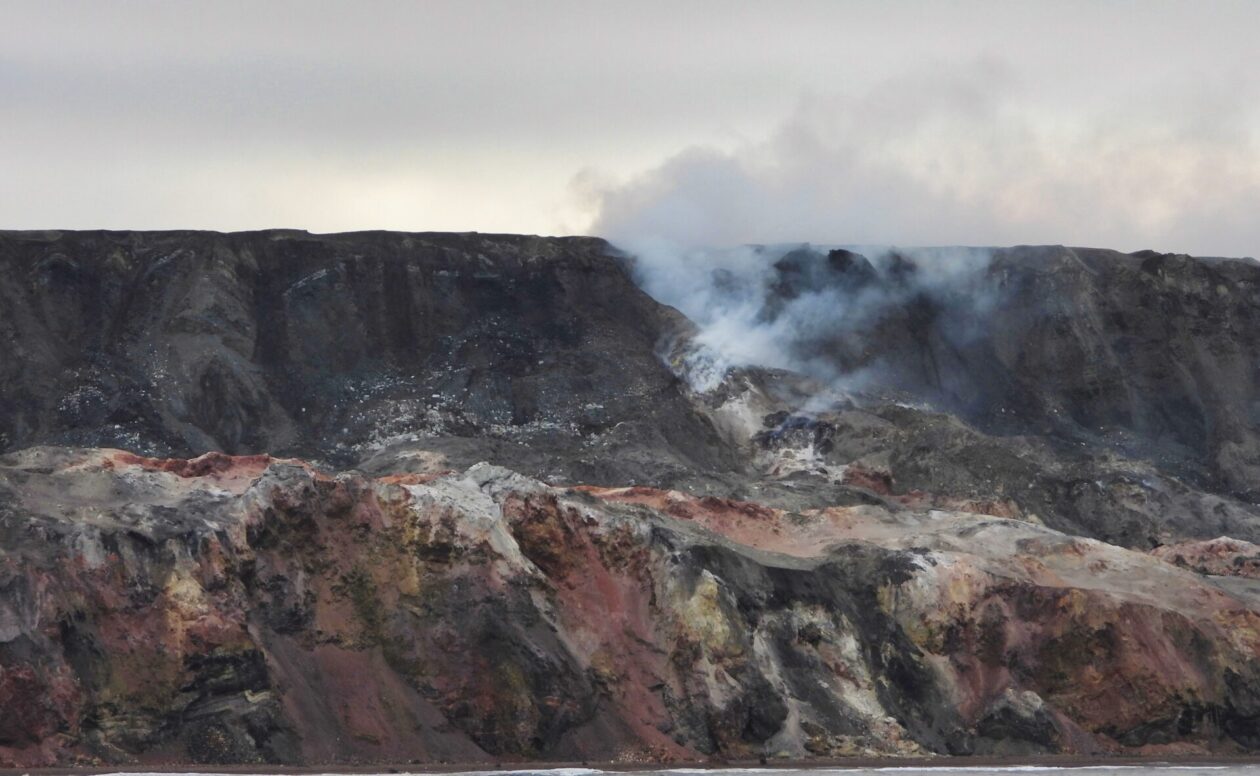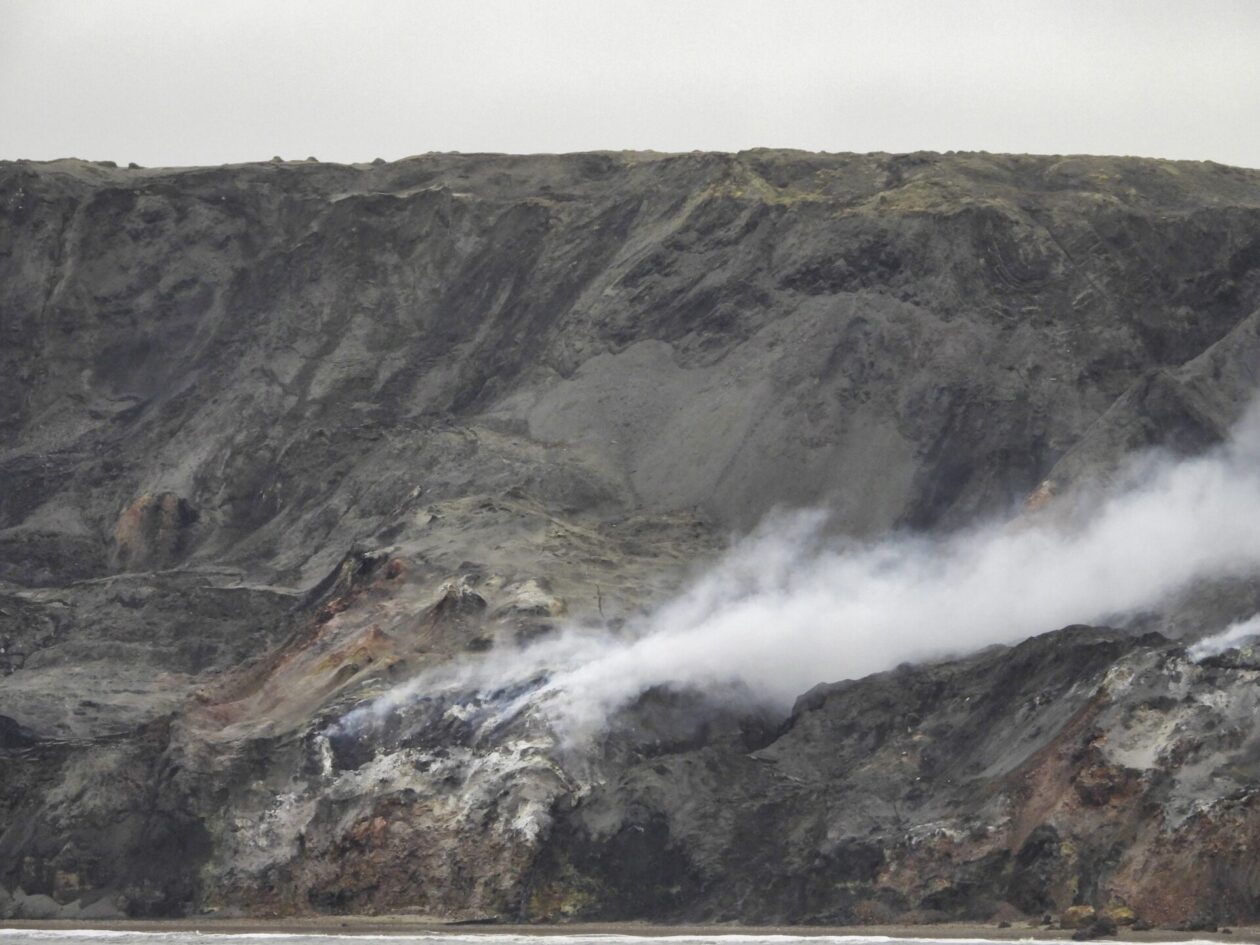- Start of trip and Nome, AL
- Herschel Island, Yukon, Canada
- Sea Day, a surprise, and the Smoking Hills, Northwest Territories, Canada
- Ulukhaktok, Northern Territories, Canada
- Murray Island, Nunavut, Northern Canada, Canada
- Cambridge Bay, Nunavut, Northern Canada
- Citizen science and Borge Island
- Gjoa Haven, Nunavut, Northern Canada
- A busy day at sea — polar bears, musk ox, and plankton, oh my!
- Prince Leopold Island, Beechey Island, and Radstock Bay, Nunavut, Northern Canada
- Croker Bay and Dundas Harbor, Nunavut, Northern Canada
- Pond Inlet and the Inuit, Nunavut, Northern Canada
- Ilulissat, Greenland
- Sisimiut, Greenland
- Red Bay, Labrador, Canada
- Corner Brook, Newfoundland, Canada and end of trip
Today was another sea day on our trip. We generally like sea days because they provide an opportunity to relax, catch up on reading or writing, and maybe attend some lectures. But there is one thing that I truly appreciate about cruising on Hurtigruten — they have a science team in addition to their expedition team. They do a lot of education, lead citizen science projects, and do research on their own. Today was a typical science sea day — some of the team and passengers were out documenting anything from birds, to clouds, to whales. Some of the rest of us were on the microscopes looking at local water samples to identify and report on the phytoplankton and zooplankton in the area. In fact, one project that is being worked on is to identify some of the harmful plankton that have found their way into the area. It’s great to see many of the passengers engaged in this effort. You can see the excitement of discovery in their eyes. I sure love it and now am becoming a devotee of iNaturalist. In fact, there is a project that has been defined for our particular Northwest Passage voyage and many people have contributed to it already. It’s never too late to learn or to exercise some of those skills and passions from long ago.
The surprise came later in the day. There are two newer expedition ships in the Hurtigruten fleet — the Amundsen that we are on and the Nansen which is the sister ship. Today, we did a rendezvous with the Nansen — bow-to-bow. They were doing the same trip as us, but East to West, instead of West to East. The primary reason was to exchange some materials between the ships, but the fun reason was to see who could represent their ship the best with the biggest number of people on deck, the most flags, and the greatest amount of noise. Well, Nansen had more passengers than us and I suspect they threatened their passengers with some horrific punishment, because they were out there in force. We made a decent showing and did many renditions of “We Will Rock You,” with all of the necessary stomping and clapping. Sadly, we were pretty much blown off the track, but it was a great experience.
The last part of the day provided the most interesting experience — the Smoking Hills! While cruising along the coastline, all of a sudden we happened on these hills that go down to the water that are billowing smoke. Through a strange set of geological circumstances, there is a natural oxidation of local sulfuric minerals and pyrite and organic matter that is contained in the oil shale here. It happens when the rock weathers and erodes and then comes in contact with oxygen, resulting in spontaneous combustion and the release of a great amount of heat. As a result of the oxidation, the rocks turn red, black, brown, yellow, and white. What it’s what you don’t see that could kill you. Just below the surface, there are one meter deep caustic ponds that contain high concentrations of minerals like aluminum, manganese, zinc, iron, cadmium, and nickel. So you might ask yourself — is this something recent. It turns out that it was Sir John Franklin was the first European to discover the Smoking Hills back in 1825. Of course local tribes in the area have always called the hills “the place of soot” or “the place of coal.” As we made several passes by the hills on the ship, we were fortunate that the winds were blowing in the other direction as the fumes have a very sulfuric smell. I should mention that one of our resident geologists, Ulli from Germany, was very emotive about his theories and feelings about this area. Given the level of his zeal, many of us thought he should be a preacher. He definitely had the fire and brimstone going! Quite a way to finish the evening!

